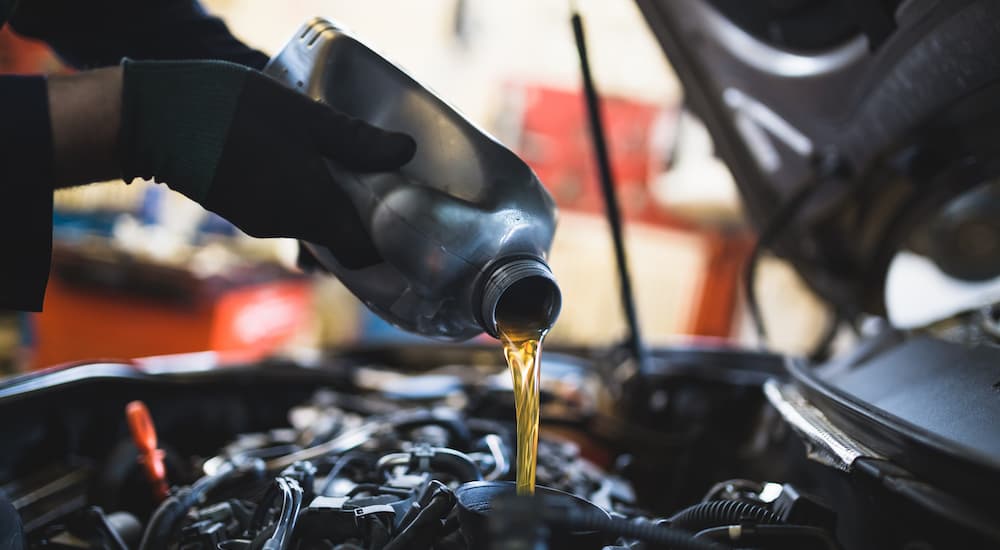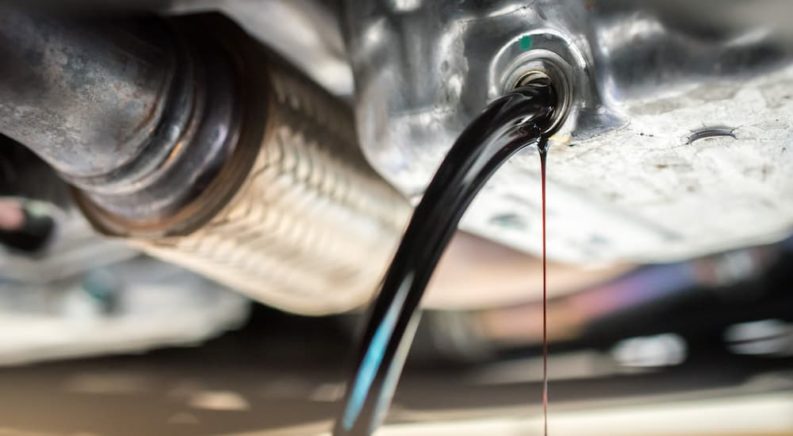Changing your oil is vehicle maintenance 101. Regular oil changes must be carried out to keep your vehicle running smoothly and efficiently. But this might leave you wondering when to start searching for an “oil change near me.” Knowing when to schedule a regular oil change can be confusing if you don’t know what “regular” is for your vehicle. Unfortunately, the answer is not as simple as “every six months” or “anytime you feel like it.”
The answer to when you should get your oil changed is, “it depends.” A little confused? Don’t worry, there is a logical answer behind it, and we’re about to dive right in. First, understanding the purpose of motor oil will help you understand the factors that can impact its quality. What does motor oil do in your vehicle?
The Purpose of Motor Oil
Motor oil has several functions within your vehicle. First and foremost, motor oil acts as a lubricant for your engine. Its job is to coat the moving parts inside the engine, reducing friction and allowing the components to operate smoothly. When oil enters your engine, it creates a layer of protection on the moving parts. Since these parts are metal, it is extremely important that they do not have direct contact with each other when they are in operation.
The oil helps to protect the engine components, prolonging their useful life. If the engine is not lubricated properly, meaning you use the wrong oil or do not have enough oil, the engine will have nothing to keep from overheating. As a result, the engine components will seize up, causing catastrophic damage and stopping your vehicle. The only way to address a seized engine is to replace it, an expensive and time-consuming process, so maintaining your oil is vital.
Additionally, motor oil cleans the engine. As the components move, contaminants will be deposited in the oil. Dirt introduced through driving, water, and other outside factors can also introduce debris. The oil traps these particulates, moving them along to be emptied with your next oil change.

Types of Motor Oil
All vehicles aren’t made the same, and the same is true of motor oil. Motor oil is primarily categorized by viscosity. Viscosity relates to how easily the motor oil pours. These viscosities are often referred to as “grades.” According to the SAE rating system, there are two viscosities to oil, one for oil at cold temperatures and one for higher temperatures.
These numbers are expressed in a set on motor oil labels. It will look like xxW-xx, where x is a number defining the viscosity. The “W” means the viscosity at winter temperatures. The lower the number is before the “W,” the easier it will flow in cold temperatures. If a sudden chill comes on, 0W will move more easily than 5W.
The second set of numbers indicates how quickly the oil will thin in higher temperatures. Before the invention of modern motor oils, drivers had to change between low-viscosity oils in the winter and high-viscosity oils in the summer. Now, one oil will work all year long. 5W-30 is a common, middle-of-the-road viscosity for areas that have moderate temperatures.
Other than viscosity, there are also different motor oil types. These types range from conventional, which is fossil fuel-based, all the way to full-synthetic, which is a man-made product. There is even motor oil specially designed for high-mileage vehicles.
Conventional oil contains fewer additives, so it will need to be changed more often than motor oil with a robust set of additives. Full-synthetic oil is man-made and has special additives designed for a whole array of jobs. Full-synthetic oil is typically more expensive, but it will allow you to go longer without changing your oil.
Synthetic blend is exactly how it sounds; it is a blend of synthetic and conventional oil. It will be less expensive than full-synthetic but still have some of the added benefits. This is an option if you don’t want to spend the extra on full-synthetic.
For higher-mileage vehicles, high-mileage motor oil is a good idea. Over time, an engine’s seals will begin to deteriorate, causing oil leaks. High-mileage motor oil is a synthetic-blend or full-synthetic motor oil that contains additives that help recondition the engine’s seals.
Should I Change My Oil by Date or by Mileage?
Now, for the age-old question. Should you change your oil by date or mileage? The answer is both, depending on how often you drive your vehicle. If you drive your vehicle consistently, you should change your oil based on mileage.
In the past, it was commonly recommended to change your oil every 3,000 miles. However, with changing oil blends and additives, this is far too soon. Modern cars will generally recommend oil changes between 5,000 miles to 10,000 miles. The best way to determine your oil change schedule if you are going by mileage is to see what the owner’s manual says. Manufacturer recommendation will trump anything else, so to be safe, read your manual.
Now, if your vehicle is not your everyday driver but rather an occasional spin-around-town type of vehicle, consider planning your oil changes based on time. Motor oil will degrade, losing its effectiveness over time, whether the vehicle is being driven or not. Ideally, you will want to have an oil change every 12 months.
Many newer cars have a system that monitors the life of your motor oil. Using data it collects over time, the vehicle can calculate when the oil needs to be changed. The program alerts you when it’s time for your oil change. If your vehicle is equipped with this tech, it is probably a good idea to follow its advice.
Other Factors
Severe driving conditions can impact how often you need to change your oil. As odd as it may sound, taking lots of short trips can be considered a severe driving condition. As we mentioned earlier, running your engine can produce debris in your oil. Dirt can be filtered out, but if water gets into your oil, it needs to be evaporated. Taking short trips doesn’t let the engine get hot enough to evaporate that water.
Driving in extreme heat is another factor that can speed up your oil change timeline. It’s science, pure and simple. According to the Arrhenius Rate Rule, lubricants such as oil will degrade twice as fast when exposed to extreme heat. The oil can become too thin, become sludgy, evaporate, etc. If you’ve had your engine overheat, it might be a good time to check on your oil.

The Moral of the Story
What is the takeaway? Maintaining your oil is extremely important for the health of your engine. Letting your oil go unchecked for too long can cause poor performance and efficiency. Plus, it could result in total engine failure, which is an expensive repair.
Knowing when to get your oil changed, or at least having a good idea, will save you money in the long run. Of course, when to get your oil changed can vary drastically. There are many factors that can impact when you should change the oil in your car and what kind of oil you should use.
Your driving habits, the environment, what kind of car you drive, and what oil you use can all impact when your oil needs to be changed. Checking your owner’s manual or getting a trusted technician’s advice is one of the surest ways to know when to schedule your oil change. If you decide to be hypervigilant, you really can’t change your oil too much. The only negative impact will be on your wallet.

